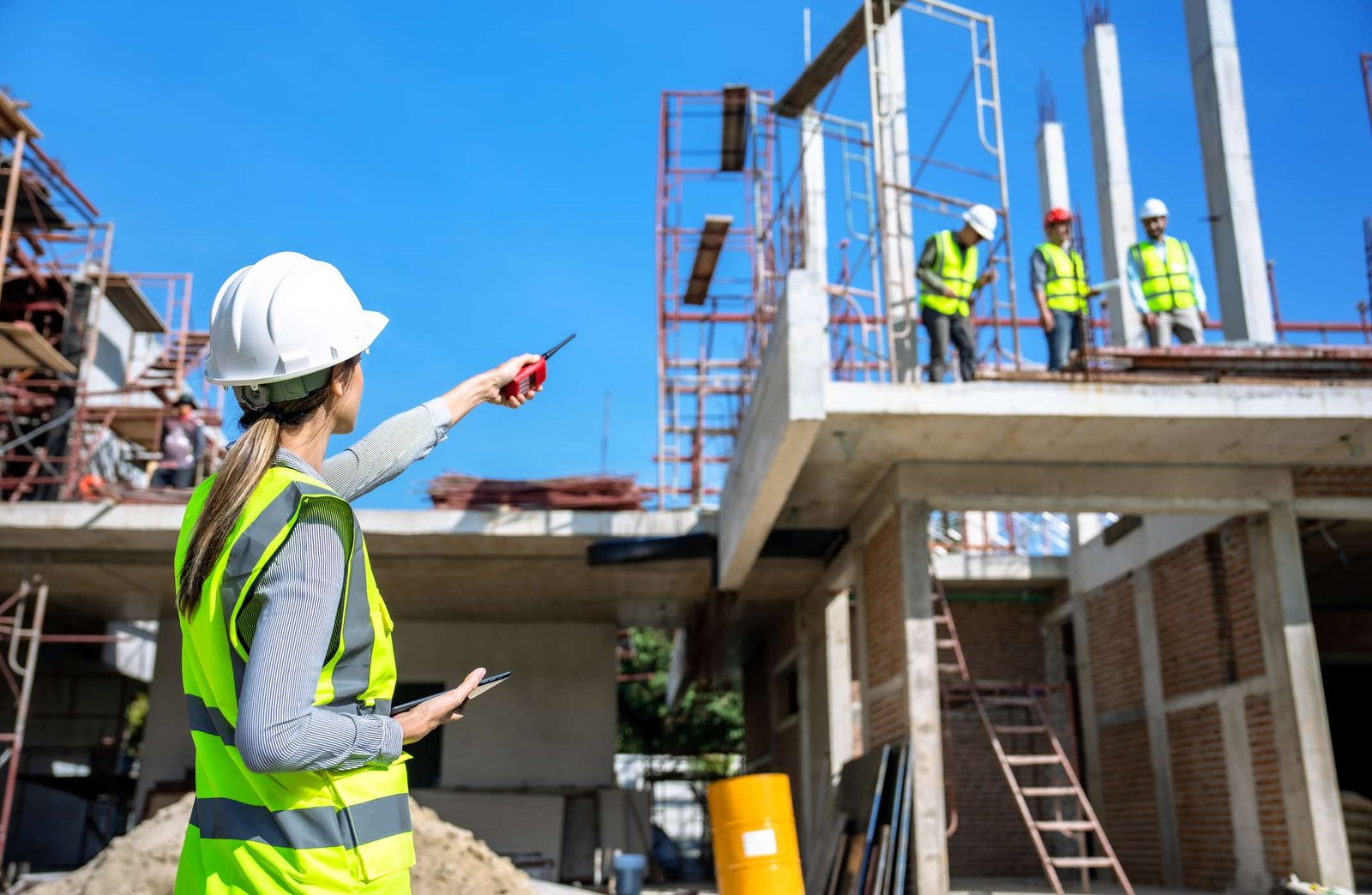
Ensuring the safety of everyone on a job site, including contractors, is one of the most important responsibilities of a workplace. Health and safety rules are in place to prevent accidents and ensure that everyone goes home at the end of the day safe and sound. However, it can sometimes be tricky to communicate these rules effectively to contractors, especially when they might be new to a project or working in a unique environment.
In this article, we'll walk you through some practical steps and strategies to communicate health and safety rules to contractors, ensuring they understand and follow the guidelines. We’ll also incorporate important safety training courses, such as theOSHA Course, which can help both employers and contractors understand the critical nature of workplace safety.
Why Communicating Health and Safety Rules is Crucial
Effective communication of safety rules is essential to creating a safe and productive workplace. Contractors, by the nature of their job, often move from one project to another, working with different teams and in varied environments. This constant shift can sometimes result in miscommunication or an incomplete understanding of the site's safety hazards.
Contractors need to be aware of the specific risks present on each job site and understand the importance of following established safety protocols. A well-informed contractor can prevent accidents, minimize risks, and improve overall productivity by adhering to safety standards.
Safety rules should not just be given to contractors on paper; they need to be communicated in a way that makes sense and sticks with them. Let’s explore how you can ensure this.
Step 1: Provide Clear and Simple Written Guidelines
One of the first things you should do is provide contractors with written safety guidelines. These should include clear and easy-to-understand language, free of technical jargon or complicated instructions. The document should outline general safety principles, specific hazards on the job site, emergency procedures, and any personal protective equipment (PPE) requirements.
Include a Health and Safety Orientation Checklist, which contractors must review and acknowledge. This ensures they are aware of all the rules and expectations before stepping onto the site.
Having this written guide can also help contractors revisit the rules whenever they need a refresher during their work. Additionally, when contractors know the rules are in writing, they feel more accountable for following them.
Step 2: Conduct Safety Meetings and Toolbox Talks
While written materials are important, they alone aren’t enough to communicate effectively. Safety meetings or toolbox talks are essential for discussing health and safety rules in person. These sessions provide an opportunity for you to go over the safety guidelines and make sure contractors understand them clearly.
During these meetings, discuss the specific risks associated with the current project. For example, if the job site involves working at heights, talk about fall protection. If hazardous chemicals are being used, go over proper handling and storage protocols.
Safety meetings shouldn’t be long-winded. Instead, keep them brief, focused, and interactive. Allow contractors to ask questions, express concerns, and provide feedback. This way, they feel more involved and are more likely to follow the safety rules.
Example: Toolbox Talk on Fall Protection
Imagine you're working on a construction site where contractors need to be aware of fall hazards. A toolbox talk on fall protection could include discussions about:
-
Proper use of fall protection equipment such as harnesses and lanyards
-
Safety rails or barriers around elevated platforms
-
Safe practices when working near edges or on scaffolding
After the meeting, hand out printed materials as reminders and have contractors sign off to confirm they understood.
Step 3: Ensure Training Is Provided
Training is the backbone of any safety program. It’s crucial that contractors receive training relevant to the specific hazards they will face on the job. The OSHA Course is one of the most effective ways to train contractors about general workplace safety and specific hazards they might encounter. Whether it's fall protection, hazardous materials handling, or safe machinery operation, OSHA provides valuable resources that can significantly improve safety knowledge.
Consider offering specific training courses like the OSHA 30-Hour Course for a more comprehensive safety education or the OSHA 10-Hour Course for less extensive training. These courses cover a wide range of safety regulations and standards that contractors can apply across many different environments.
Step 4: Use Visual Aids and Signage
People process information in different ways, and while verbal and written instructions are helpful, visuals can be a powerful tool in communicating safety rules. Incorporate signs, labels, and symbols throughout the job site to serve as constant reminders of safety procedures.
For example, use warning signs to mark areas with electrical hazards, restricted access signs to indicate dangerous zones, and PPE requirements to ensure workers know what safety equipment they need to wear. These visual cues help to reinforce the rules and provide quick guidance when contractors are on the move.
When contractors see safety information in multiple formats—written, spoken, and visual—they are more likely to remember it and apply it consistently.
Step 5: Provide Mentoring and On-Site Supervision
While contractors may have formal training, the first few days on a new job site can be overwhelming. Provide mentoring or on-site supervision to ensure they understand how to apply safety rules in the context of the specific work environment. A mentor or supervisor can answer questions, guide contractors through difficult situations, and observe whether they’re following safety guidelines.
This also provides an opportunity to reinforce any training they've received, ensuring that safety procedures are being carried out correctly. On-the-job supervision fosters a culture of safety and shows that the company cares about the well-being of all its workers.
Step 6: Create a Safety Culture That Encourages Open Communication
A safety-first culture should be at the heart of your workplace. When contractors feel that safety is a priority, they are more likely to take it seriously. This culture must be built on open communication, where contractors feel comfortable discussing hazards, raising concerns, and suggesting improvements to safety procedures.
Encourage contractors to report any safety violations or near-miss incidents, and ensure that they know who to talk to if they need help. Foster a non-punitive environment where mistakes can be discussed openly, and everyone works together to ensure a safer workplace.
Regular check-ins with contractors about safety, along with a proactive approach to solving potential issues, will help ensure that safety is always top of mind.
Step 7: Use Technology to Streamline Safety Communication
In today’s digital age, technology can play a significant role in ensuring contractors are aware of health and safety rules. Mobile apps, safety management systems, and digital safety training platforms can all help streamline the process of communication.
For example, some apps allow contractors to access safety guidelines on their phones, view site-specific safety plans, and report hazards in real-time. This technology makes it easy to communicate changes to safety protocols and ensures that everyone has access to the latest information.
Read More: OSHA in Pakistan
OSHA in Pakistan offers localized training and certification programs, ensuring that contractors understand and comply with specific safety standards in your region.
Using Online OSHA Training
One of the most convenient ways to ensure contractors are trained and up to date on safety protocols is by utilizing online OSHA courses. These courses are flexible, allowing contractors to complete them at their own pace, and cover a wide range of topics relevant to various industries.
These online OSHA training programs can be a perfect complement to on-site safety meetings and can ensure that contractors have the theoretical knowledge needed to keep them safe on the job.
Conclusion
Communicating health and safety rules to contractors doesn’t have to be a daunting task. By following these steps, you can ensure that contractors fully understand the safety expectations and feel comfortable adhering to them.
Providing clear written guidelines, holding safety meetings, offering training, using visual aids, and fostering a safety-first culture are all crucial in making sure that everyone on the job site remains safe.
Incorporating proper safety training, like the OSHA Course, can also provide contractors with the knowledge and confidence they need to carry out their tasks safely. Remember, the goal is not only to prevent accidents but to create an environment where safety is ingrained in every decision made.
By prioritizing safety, you'll see reduced incidents, higher productivity, and a more confident and compliant workforce.

0 Comments
Post Comment